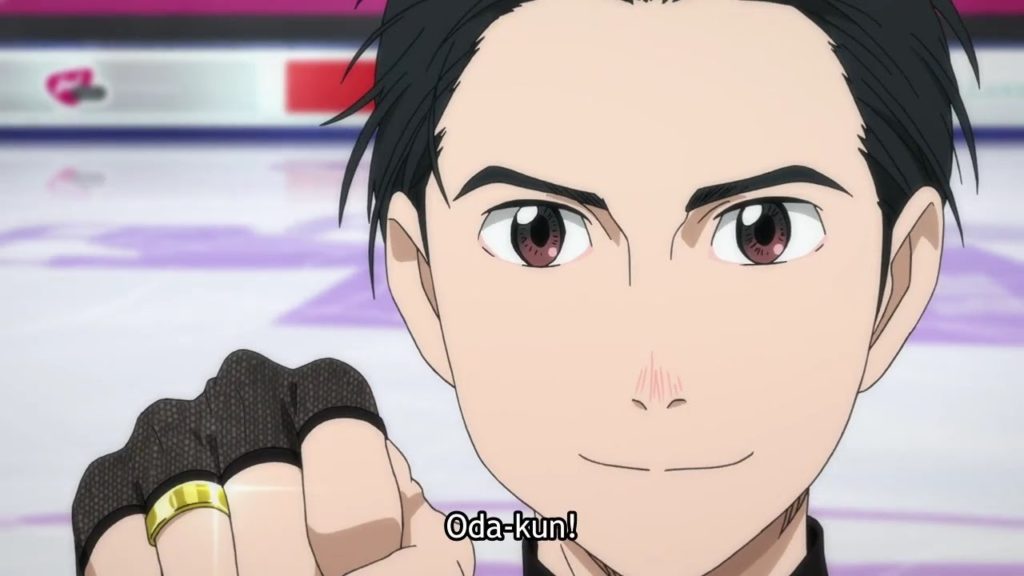

When he’s not training on the ice, he’s either playing with his poodle or flirting with his fiancé Yuri, demonstrating an easy tenderness in a Russian character the likes of which I’ve never seen before. Dedicated and committed to his craft, yet still silly and playful, and loyal to his friends and family, Victor Nikiforov is a man of many dimensions. The Marvel universe is rife with Russian antagonists who are violent, presumably straight, gun-toting criminals with as much emotional depth as a block of ice. Rooted in Cold War propaganda that still lingers to this day, Russian characters are often synonymous with villainy, thick (and often terrible) accents signaling their nefarious ways. In Western media, Slavic representation is generally characterized by poorly written stereotypes. So when I saw Victor Nikiforov, a Slavic character who is so openly queer, portrayed in a such a devoted and beautiful relationship with Yuri, I was nearly moved to tears. Homophobia takes on new dimensions when it appears in two languages, when there’s the absence of the vocabulary for who you are and when no one wants to talk about it.Īside from Masha Gessen, a LGBTQ+ Russian-American journalist who had to flee Russia because of its homophobic politics, I didn’t really know many figures (fictional or actual) who shared my twin, seemingly opposing identities of being queer and Slavic. It meant having to switch the pronouns of the girl I had a crush on when talking with my mom, while I had no trouble telling her about the crush I’d had on a boy previously. It meant having to hide the comics and books with obviously queer covers in spaces my family couldn’t find them. Queerness was never discussed in my house, and in the rare instances it did make an appearance, such as a same-sex couple kissing on TV, my parents would quickly change the channel and never mention it or, worse, discussed it in a tone that made me wish the subject had never come up at all.ĭiscovering that I wasn’t straight meant that I had to be extra vigilant growing up.

When they moved to America, they brought the culture of their birth country with them, including the good, the weird, and the ugly.Įven living in New York City, I didn’t learn about the LGBTQ+ community until late in my teens. I am first-generation Ukranian-American, meaning that while I was not born in the former Soviet Union, my parents and the majority of my family were. As random strangers in Barcelona applaud Victor and Yuri’s “engagement,” there is a sense that the queerness is non-negotiable. In his youth, Victor was gender-nonconforming and often presented androgynously, including growing his hair long, donning a flower crown, and wearing costumes that, in his words “suggested both male and female genders at once.” Yuri dons that costume later himself and, in many ways, inherits that androgyny as he performs his routine using feminized body language. The show’s casual, yet revolutionary acceptance of queerness blew me away. From then on, the two form an enthralling creative relationship, training together for Yuri’s Grand Prix comeback, while also delving into an intense romantic relationship. His life soon becomes intertwined with the protagonist’s, Japanese figure skater Katsuki Yuri, when he agrees to become Yuri’s coach and mentor. Victor Nikiforov is a Russian internationally ranked figure-skater, a five-time consecutive Grand Prix champion at the height of his career. Of all the amazing things about the show, one of the most striking to me was the revolutionary way it portrayed the intersection of queer and Slavic identity. Much to my surprise (and detriment to my ability to concentrate on chemistry), I was immediately hooked. I had been hearing about the show within the anime community for some time yet had put off watching it, unsure if the anime lived up to the hype. In the throes of 2016, I decided to take a break from my midterms cram session by watching some clips of a new anime called Yuri!!! on ICE.


 0 kommentar(er)
0 kommentar(er)
